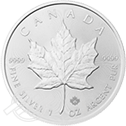How to Hedge Against Inflation: 5 Strategies
Inflation is like a horror movie. There’s no escaping. The signs are everywhere you look:
- $14 for a dozen eggs
- $6.50 for a gallon of gas
- $10 orange juice
Inflation has taken hold, and millions of consumers are feeling the pinch.
The current US Inflation Rate is 3.7% compared to 3.67 last month. Still higher than the long-term average of 3.28%, current levels have quelled from last year’s 8.2%.
But what is inflation, and how can you try to avoid it?
This guide will explain what inflation is and how it affects your life.
We will show you how to hedge against inflation and hopefully preserve your hard-earned money.
What Is Inflation, and Why Is It Important to Understand?
Inflation is the rise in the price of goods and services over a specific amount of time—usually one year. It cuts into the purchasing power of money.
Measured by the consumer price index (CPI), inflation is one of the most dreaded words in economics.
It can refer to general conditions, such as the cost of living in a city or country. Inflation can also be specific to a certain product or sector of the economy.
No matter the reference point, the effect is the same. Inflation erodes your purchasing power.
When nominal incomes—real, current wages (as opposed to wages adjusted for inflation)—do not increase as much or as steadily as prices, consumers are worse off. They can’t afford today what they could afford yesterday. Purchasing power falls and lowers real, inflation-adjusted incomes. The standard of living drops as real income decreases.
Inflation can destabilize a nation. It can cause interest rates to soar, making it more expensive to borrow money. Inflation can also severely devalue currency. In the most severe cases, countries like Zimbabwe and Argentina have had to take extreme measures to hedge against inflation and abandon or strongly consider abandoning their currency altogether.
Factors That Influence Inflation
Inflation is the result of expectations, output, and money. Many factors can lead to runaway inflation, including:
- Demand-pull is the most common cause of inflation. It occurs when full employment and wage increases lead to more consumer spending. That spending leads to high demand and short supply of products. The resulting competition for items drives up prices.
- Money supply imbalances can speed up inflation. An increase in the money supply usually coincides with lower interest rates. Low interest rates encourage spending and investing. Businesses may struggle to keep supplies on par with the increased demand caused by more money in circulation. Product shortages lead to higher prices.
- Cost-push inflation refers to rising prices due to increased production costs. Manufacturers must make a profit to stay in business. When the costs of wages, raw materials, and utilities increase, so does the price of products.
5 Tips on How to Hedge Against Inflation
It is key for investors and consumers to learn how to protect against inflation. You must take steps to preserve dollar value and purchasing power. Remember, the idea is to keep your long-term goals on track.
Here are some tips to consider.
Continuously Monitor Assets
Check your accounts regularly. Monitor the inflows and be fully aware of the outflows. Inflation can sneak up, and before you know it, you’ve spent far more than you’re used to or meant to spend.
Look for ways to save money and improve portfolio performance.
Utilize a High-Yield Savings Account
A high-yield savings account offers an interest rate that can be significantly higher than a typical account. Average savings accounts currently earn less than 0.5% interest. High-yield accounts currently offer 4.5 to 5% interest rates.
High-yield accounts often restrict the number of monthly transactions allowed and how you access your funds. They are great for funds you do not need to touch for long periods of time.
Read the fine print to be certain that the rules and restrictions of any high-yield account you consider match your needs and lifestyle.
Invest in Treasury Bonds
The U.S. Treasury issues bonds that can be key instruments for protecting against inflation.
Treasury Inflation-Protected Securities (TIPS) are indexed to inflation. As inflation rises, so does your investment principal, thus maintaining value.
Consider investing in savings bonds issued by the Treasury. Savings bonds offer higher than average interest rate yields in exchange for leaving money invested for a period of time.
Prioritize Diversification
Do not put all your $14 eggs in one basket. Spread your investment portfolio across many different stocks, bonds, and asset classes.
A balanced portfolio contains investments that may rise while others fall. By offsetting losses, you avoid having to play catchup when one sector declines.
The more time your portfolio spends moving forward, the more it will be worth in the end.
Consider Precious Metals as an Investment Tool
Precious metals offer potential inflation protection and help store value.
Gold, silver, platinum, and palladium are priced in dollars. Inflation raises prices of goods, including commodities such as precious metals. It takes more dollars today to buy the ounce of gold you bought yesterday, preserving the value of your dollars.
Precious metals are a different asset class than stocks, bonds, and treasuries. Metals are a real, tangible asset. History has shown that when paper assets are down, metals are often up.
Gold performs well over the long term. In 1972, an ounce of gold cost $38. In 2023, an ounce of gold costs nearly $2,000.
How to Protect Against Inflation
We can’t avoid inflation, but we can fight it.
By learning how to hedge against inflation, you can minimize its effects and preserve your purchasing power.
Many investors feel portfolio diversification is the key. They often turn to gold, silver, and the precious metals IRA to decouple from the stock market.
The Gold IRA is a great way to own physical gold. In a world of digital currency and paper stocks, the self-directed account allows tax-deferred ownership of a real, tangible asset.
Trust a proven company like Advantage Gold for your precious metals investing.
For nearly a decade, our account executives have been educating and assisting clients with purchasing IRA-eligible gold, silver, platinum, and palladium.
We can help you, too.
Click the link and let us know how to contact you. Better yet, call us today. An account executive is at the ready. We will help you transfer or roll over to a precious metals IRA or direct-deliver metals to your doorstep.
We look forward to your call.
Tags: hedge against inflation, how to protect against inflation, protecting against inflation


